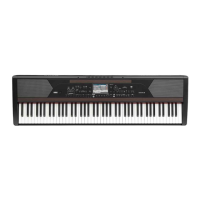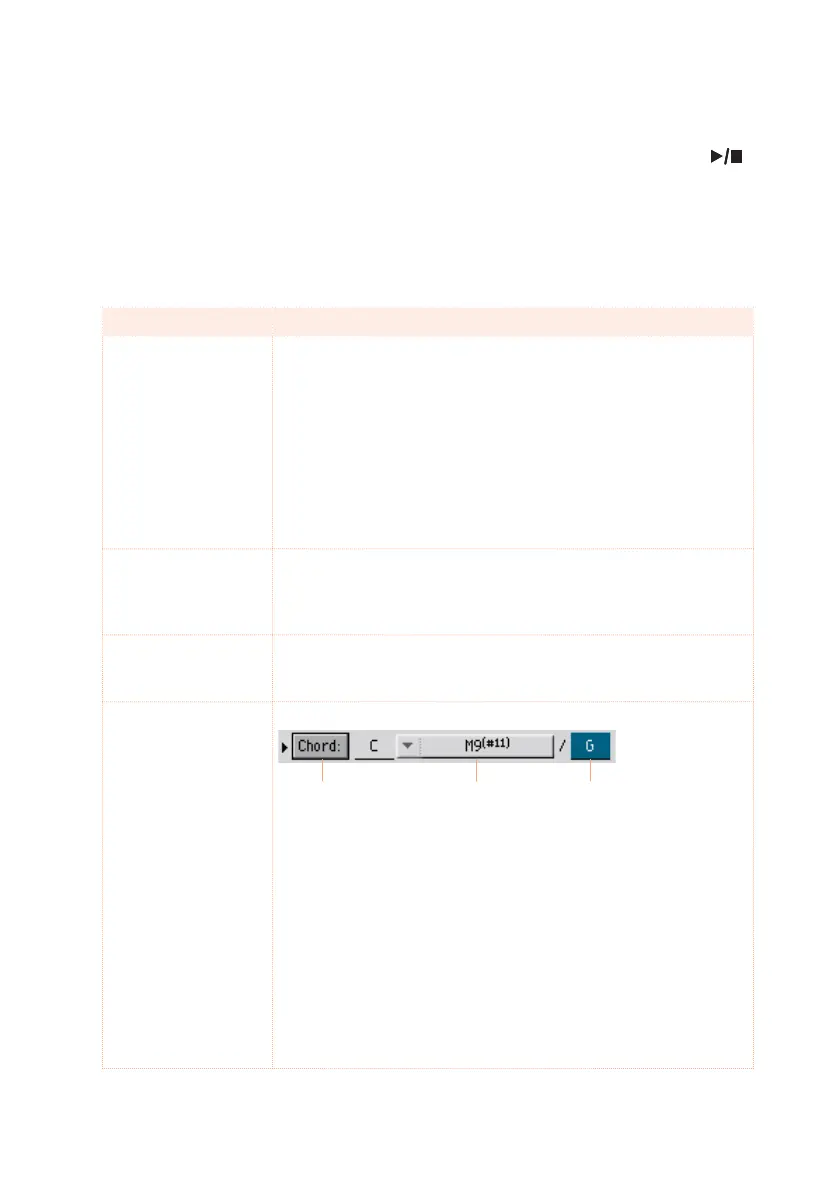294| Recording MIDI Songs
4 When finished editing, touch the Done button to exit from the Step Backing
Sequence recording mode.
5 While in the main page of the Sequencer mode, press the PLAY/STOP ( )
button to listen to the recorded Song.
Event types
There are the events you can enter or edit.
Event type Meaning
Style Latest selected Style. To insert a Style change at the current posi-
tion, touch the Style name to open the Style Select window.
Any Style Change inserted after the beginning of the measure
(i.e., to a position other than Mxxx.01.000) will be effective at the
following measure. For example, if a Style Change event has been
inserted at M004.03.000, the selected Style will be effectively se-
lected at M005.01.000. (This works exactly as in Style Play mode).
When inserting a Style Change, you may also insert a Tempo
Change at the same position. A Style Change will not automati-
cally insert the Style’s Tempo.
Performance Latest selected Performance. To insert a Performance change
at the current position, touch the Performance name to open the
Performance Select window, or follow the standard selecting pro-
cedure using the PERFORMANCE section.
Tempo This is the Tempo Change parameter. To insert a Tempo Change
event at the current position, select this parameter and use the
VALUE dial to change its value.
Chord The chord parameter is divided in four separate parts:
Name Type
Select one of the parts, then use the VALUE dial to modify it. As
an alternative, you can play a chord, and it will be automatically
recognized. While recognizing a chord, the status of the Bass
Inversion parameter will be considered.
The lack of a chord (--) means that the accompaniment will not
play at the current position (apart for the Drum and Percussion
tracks). To select the “--” option, select the Name part of the Chord
parameter, then use VALUE DIAL to select the very last value
(C…B, Off).
If you replace a chord with a different one, please remember that
the Keyboard track (if recorded) will not be automatically changed,
and may cause a dissonance against the accompaniment.

